Science
Super Blue Moon Set To Enchant Sky Gazers On August 31 – Where To Watch It?
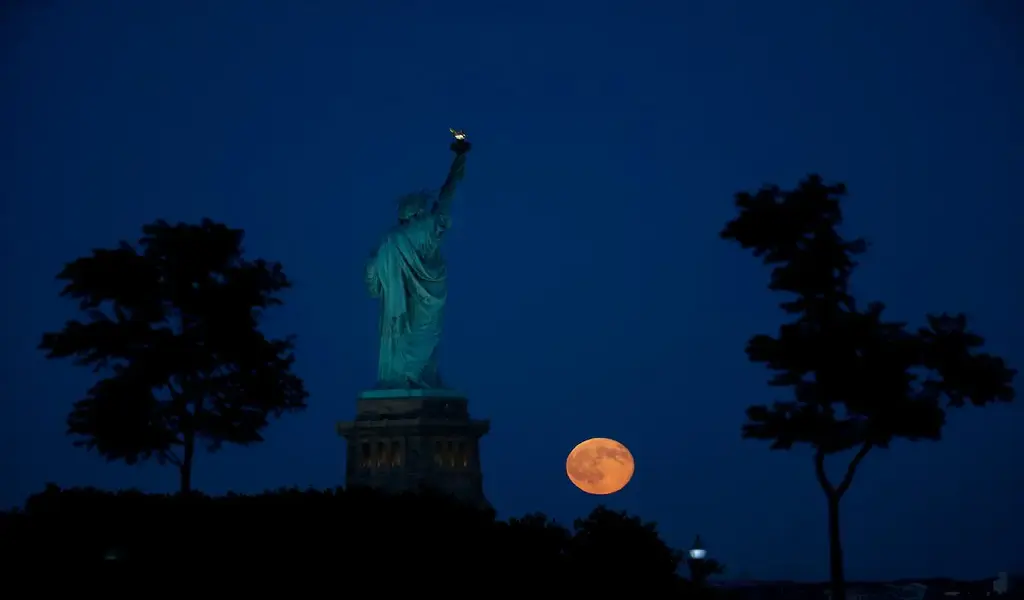
(CTN NEWS) – Sky gazers eager to witness a rare celestial event known as a “super blue moon” should mark their calendars for August 31. On this night, the captivating super blue moon exhibit will unveil itself, showcasing the third-largest moon appearance of the year.
This event also marks the conclusion of the four-part supermoon series.
Interestingly, the colloquial phrase “Once in a blue moon” has its origins in the realm of astronomy. It symbolizes occurrences that are exceptionally uncommon, much like the infrequent appearances of super blue moons gracing our nighttime canvas.
A super blue moon phenomenon arises when a second supermoon graces the skies within a single month.
The most recent occurrence of such an event was on January 31, 2018, and the subsequent one is not anticipated until January 31, 2037, as affirmed by NASA ambassador Tony Rice.
As anticipation builds for this mesmerizing event, here’s a comprehensive rundown of all you need to know:
What Exactly Is A Supermoon?
A supermoon occurs when the Moon follows an elliptical path around our planet and reaches its closest point to Earth, known as the perigee. If the Moon is also in its full phase at this perigee point, it appears unusually large when viewed from Earth.
What About A Blue Moon?
The Moon completes its cycle in about 29.5 days, slightly less than a month. Over the span of two or three years, this difference accumulates until two full moons happen within a single month.
Despite its name, the term “Blue Moon” doesn’t imply that the Moon turns blue, as clarified by the DAG.
Nasa adds that in rare instances, minuscule particles in the atmosphere—often smoke or dust—can scatter the red wavelengths of light. This phenomenon can lead to the Moon taking on a blueish hue in appearance.

Did You Know? Unraveling the Mystery of the Super Blue Moon’s Double Appearance
Have you ever wondered about the captivating phenomenon of a blue moon? Imagine the enchantment of witnessing two full moons grace the sky within a single month.
With the lunar cycle spanning 29.5 days—just a bit shorter than the average calendar month—a fascinating sequence of events unfolds.
But what’s the secret behind this occurrence? As the full moon graces the beginning of a month, a unique scenario takes shape, allowing ample time for another complete lunar cycle to transpire.
And as a result, a second full moon emerges within the same month, casting its radiant glow.
In simpler terms, when the full moon adorns the 1st or 2nd day of a month, it sets the stage for a potential second appearance on the 30th or 31st day. Does this spectacle happen often? Not quite—it’s a rarity that unfolds every two to three years.
Dive into the nuances of blue moons as we explore two intriguing categories: “monthly” and “seasonal.” Get ready to unravel the details of the upcoming moon event, falling under the banner of a monthly blue moon.
But that’s not all—discover the magic of seasonal blue moons, where a single season (spring, summer, fall, or winter) defies convention by accommodating four full moons instead of the usual three.
Why Does It Occur So Infrequently?
Supermoons, which are full moons that coincide with the Moon’s closest position to Earth in its orbit, can appear around 14 percent larger and up to 30 percent brighter than the smallest-looking full moons, as explained by NASA.
Observers can witness up to four supermoons annually: these events consistently occur in sequence, spaced roughly 29.5 days apart.
The final supermoon of this year’s series, known as the fall harvest moon, is set to grace the skies on September 29th.
Where Can You Observe It?
The Moon’s luminous and expansive display can be enjoyed from virtually any location. Nevertheless, if you possess a telescope, seeking out a spot in a desert region, where the darkness prevails, could offer an enhanced viewing experience.
For those seeking a guided expedition, there are paid opportunities accessible throughout the UAE. As an example, the Dubai Astronomy Group is arranging a special observation event for the Blue Moon at the Al Thuraya Astronomy Centre. Tickets for adults commence at Dh60.
RELATED CTN NEWS:
Former President Trump Surrenders And Receives Mug Shot Amidst Allegations Of Election Subversion
2024 Republican Presidential Primary Debate Draws 11.1 Million Viewers On Fox News
Countdown Reset: SpaceX’s Crew-7 ISS Mission Faces 24-Hour Launch Delay – Watch Live!!

Science
NASA Switches Off Instrument On Voyager 2 Spacecraft To Save Power
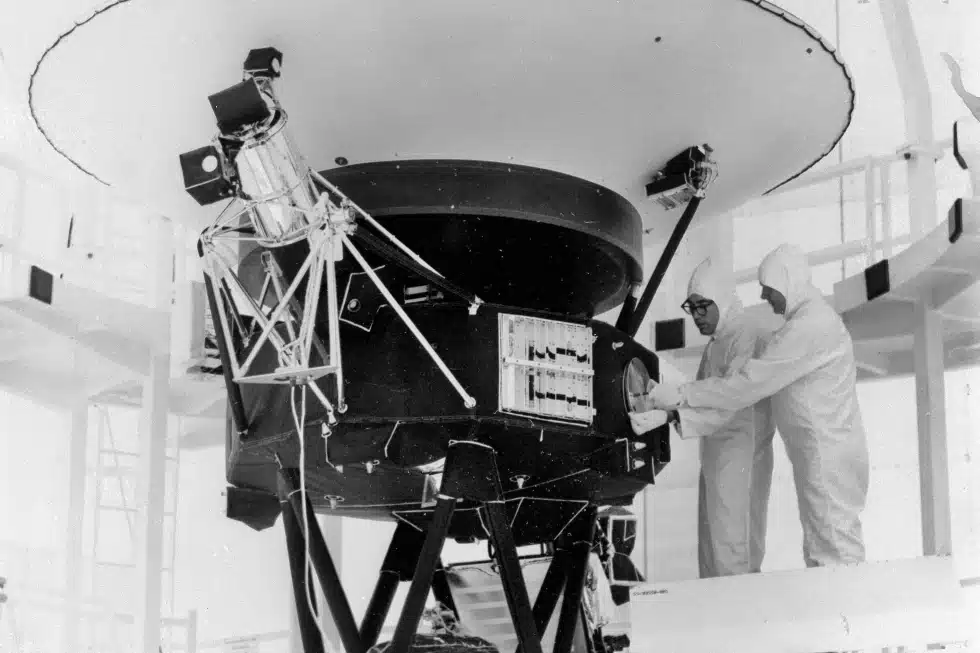
NEW YORK — To save power, NASA turned off another scientific equipment on its long-running Voyager 2 spacecraft.
NASA Switches Off Instrument On the Spacecraft To Save Power
The space agency announced on Tuesday that 2’s plasma science instrument, meant to study the movement of charged atoms, was turned off in late September to allow the spacecraft to continue exploring for as long as possible, which is estimated to be into the 2030s.
NASA turned off a suite of instruments on Voyager 2 and its twin, Voyager 1, after exploring the gas giant planets in the 1980s. Both are currently in interstellar space or the region between stars. The plasma instrument on Voyager 1 stopped working years ago and was finally shut off in 2007.
The remaining four instruments on 2 will continue to collect data on magnetic fields and particles. Its mission is to investigate the regions of space beyond the sun’s protective sphere.
NASA Switches Off Instrument On Voyager 2 Spacecraft To Save Power
It launched in 1977, is the only spacecraft to have visited Uranus and Neptune. It is now more than 12 billion miles (19.31 billion kilometers) from Earth. 1 is more than 15 billion miles (24.14 billion kilometers) beyond Earth.
SOURCE | AP
Science
Hurricane Kirk Could Cause Dangerous Surf Conditions Along The US East Coast
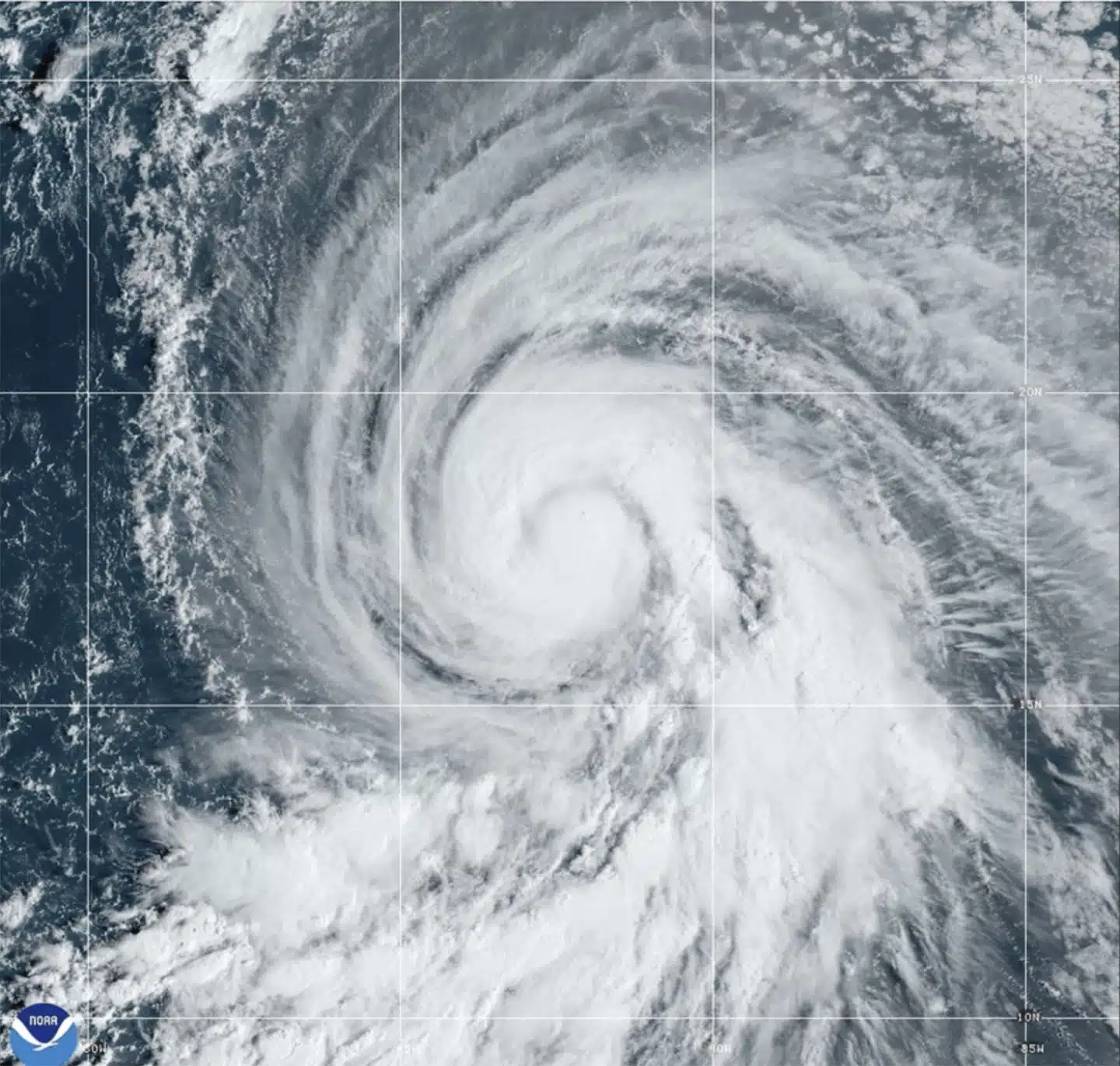
MIAMI — Hurricane Kirk’s waves could generate life-threatening surf and rip current conditions this weekend throughout the United States East Coast, as well as in Bermuda, the Greater Antilles, and the Bahamas, according to forecasters.
Kirk was a Category 3 hurricane in the middle Atlantic Ocean that might grow further but was predicted to stay away from land, according to the Miami-based National Hurricane Center on Thursday.
Hurricane Kirk Could Cause Dangerous Surf Conditions Along The US East Coast
Kirk-generated swells were forecast to reach parts of the Leeward Islands on Friday, Bermuda and the Greater Antilles on Saturday, and the East Coast and the Bahamas on Sunday, according to the center.
No coastal watches or warnings were in effect. The major storm was around 1,130 miles (1,820 kilometers) east of the Leeward Islands, with maximum sustained winds of 125 mph (205 km/h).
Meanwhile, Tropical Storm Leslie formed late Wednesday in the eastern Atlantic and is expected to strengthen into a hurricane in the following days, forecasters said. It was also not considered a threat to the land.
Hurricane Kirk Could Cause Dangerous Surf Conditions Along The US East Coast
The storm was about 540 miles (870 kilometers) southwest of Cabo Verde’s southernmost tip, with maximum sustained winds of 45 mph (75 kph), according to the center.
The storms raged in the Atlantic as rescuers in the United States Southeast sought for missing persons after Hurricane Helene struck last week, leaving a trail of death and devastation.
SOURCE | AP
Science
Giant Fossilised Footprint Of Dinosaur Found in China
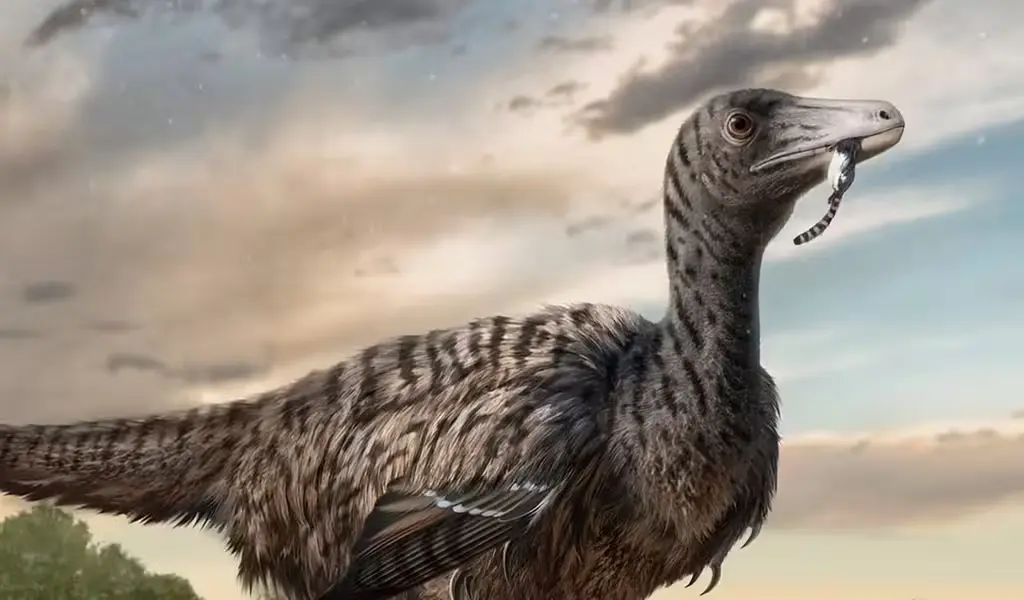
(CTN News) – A team of palaeontologists believes they have discovered fossilized footprints of one of China’s largest raptors. The collection of five fossilized dinosaur footprints is half the length of a school bus.
The footprints were discovered in a dinosaur trackway in south-east China in 2020. Scientists believe dinosaurs walked over the muddy river during the Cretaceous period, leaving footprints. Some footprints have been preserved for tens of millions of years.
The dinosaur trackway was unearthed in Longxiang and is around the size of a hockey rink. Some of the footprints are unusually formed, with intact imprints of only two toes.
Fossilised footprint of megaraptor found in China

Giant fossil footprints lead to megaraptor dinosaur discovery in China
Raptors, or predatory birds, are often small and referred to as deinonychosaurs. For example, a Velociraptor is around the size of a turkey. Few raptors, such as the Utahraptor and Dakotaraptor, increased in size significantly, reaching lengths of 5 to 6 metres. The Triassic ichthyosaur was the largest raptor known until now.
According to the scientists, the predator would have attacked its prey with a pair of huge “killing claws” on each foot.
What scientists discovered recently in China is massive, far larger than the largest superpredator known to date.
Scott Persons of the College of Charleston in South Carolina, and his colleagues, added another large raptor to the list. They named it Fujianipus, and they believe it lived in East Asia some 96 million years ago.
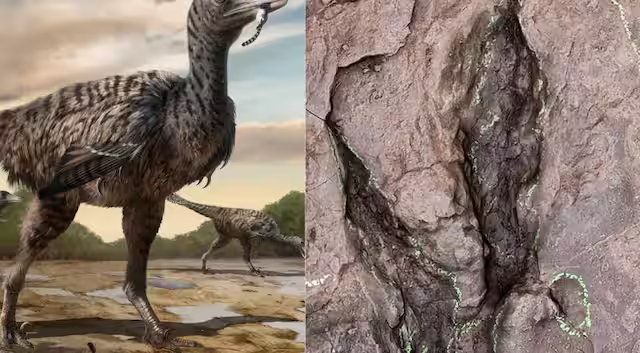
Scott Persons at the College of Charleston in South Carolina and his colleagues added another giant raptor to the list. They named it Fujianipus, and they say it lived in East Asia about 96 million years ago. Photograph:(Twitter)
Persons and his colleagues are currently working on areas of Fujianipus’ skeleton, therefore little is known. The investigators only discovered a few of its 36-centimetre-long imprints.
“Preservation conditions were right for footprints but not so great for bones,” Persons said. However, scientists are certain that the footprints belong to a raptor because each one contains the imprint of only two toes, which corresponds to the foot anatomy of raptors. Raptors generally have three toes, but they keep one off the ground to preserve the big claw at the tip from wear and tear.
People believe Fujianipus demonstrates that raptors had the ability to grow much larger and compete with the largest predatory dinosaurs on the landscape at the time – allosauroids, some of which exceeded 10 metres or more in length.
According to Persons, raptors had an advantage over allosauroids in terms of speed. However, without fossilized leg bones, the researchers cannot correctly measure Fujianipus’ speed.
-

 News4 years ago
News4 years agoLet’s Know About Ultra High Net Worth Individual
-
Entertainment2 years ago
Mabelle Prior: The Voice of Hope, Resilience, and Diversity Inspiring Generations
-
News11 years ago
Enviromental Groups Tell Mekong Leaders Lao Dam Evaluation Process Flawed
-

 Health4 years ago
Health4 years agoHow Much Ivermectin Should You Take?
-

 Tech3 years ago
Tech3 years agoTop Forex Brokers of 2023: Reviews and Analysis for Successful Trading
-

 Lifestyles3 years ago
Lifestyles3 years agoAries Soulmate Signs
-

 Entertainment3 years ago
Entertainment3 years agoWhat Should I Do If Disney Plus Keeps Logging Me Out of TV?
-

 Health3 years ago
Health3 years agoCan I Buy Ivermectin Without A Prescription in the USA?
